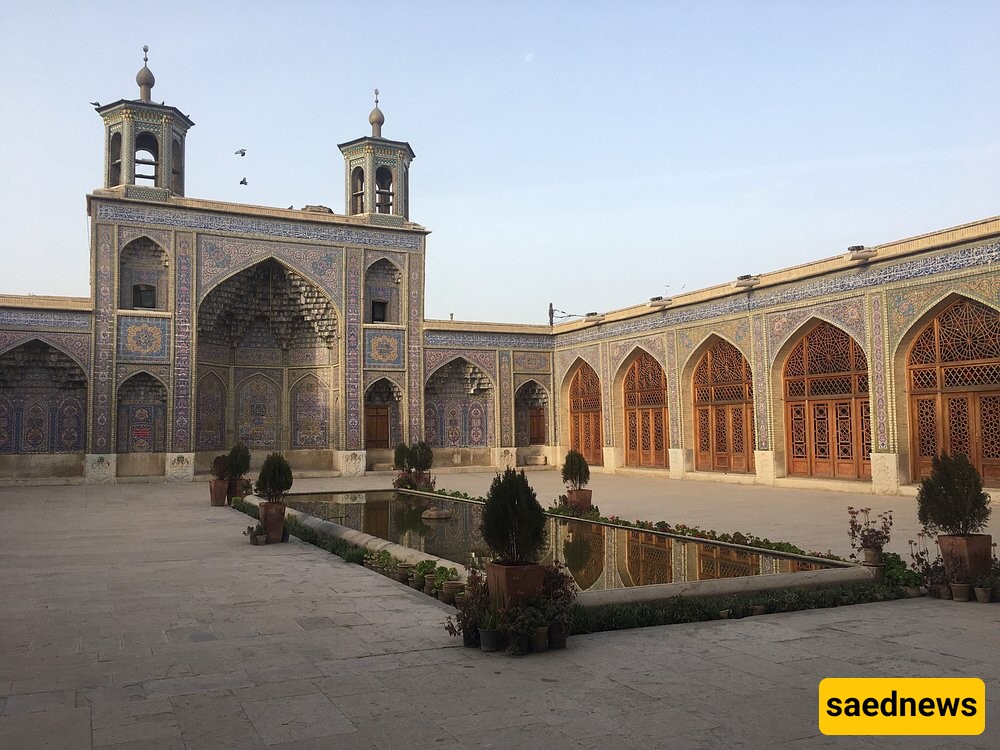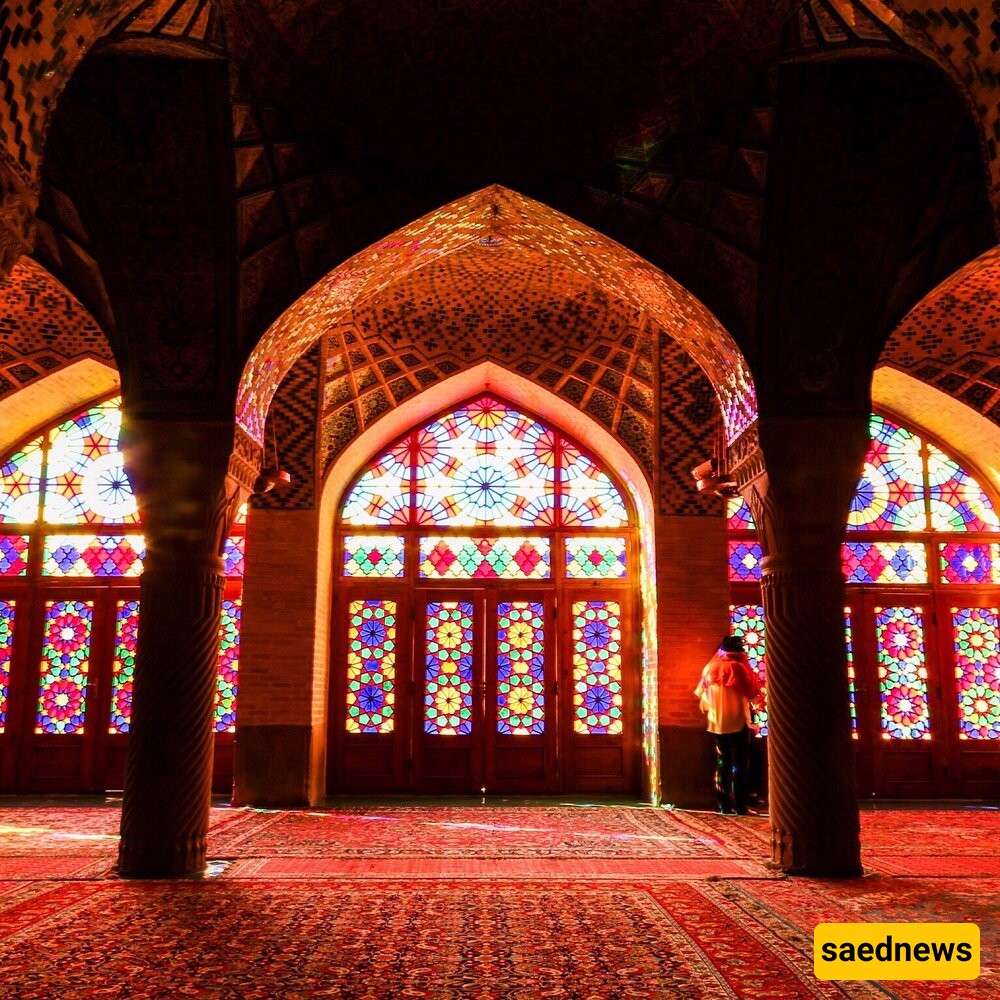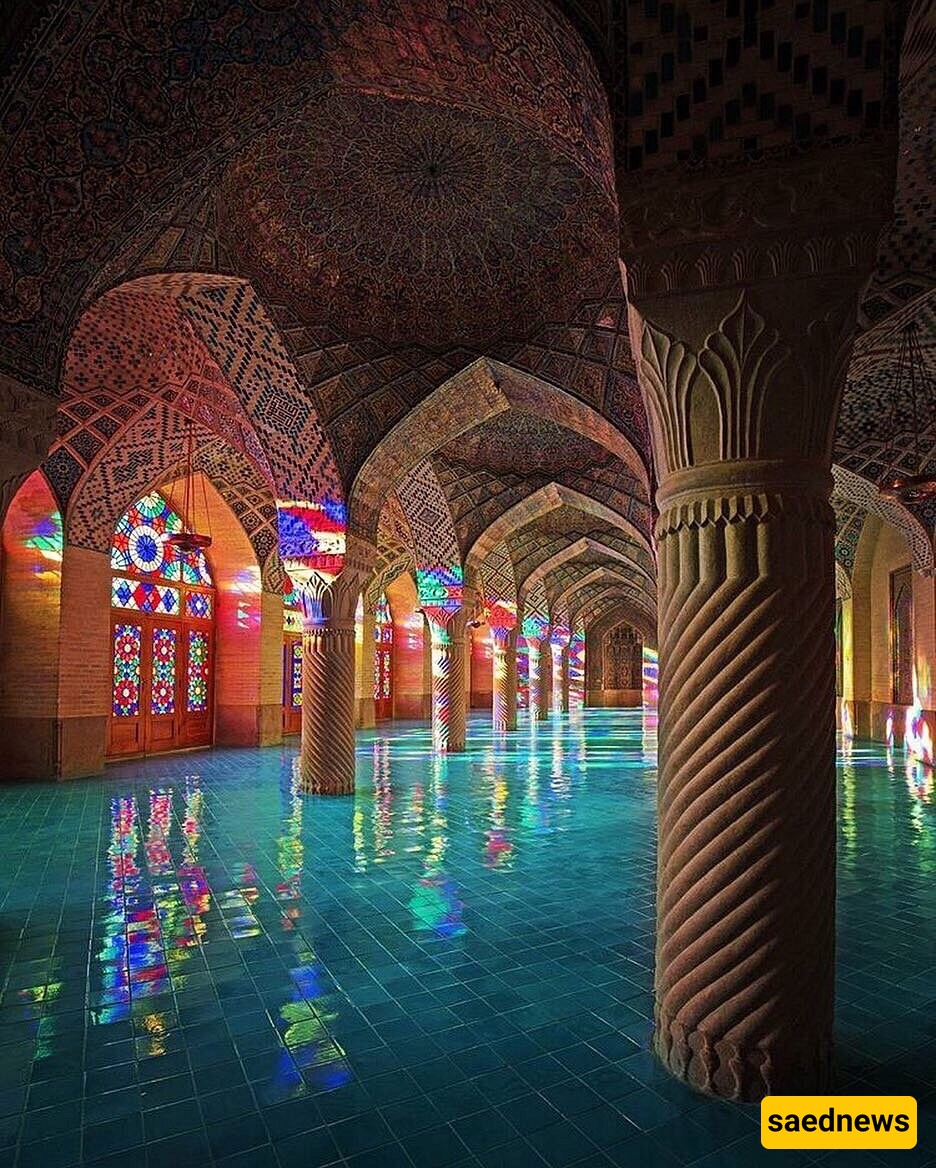SAEDNEWS: The Nasir al-Mulk Mosque, or Pink Mosque, in Shiraz, Iran, enchants visitors with its vibrant stained-glass windows and intricate tiles. This architectural gem not only showcases Persian artistry but also highlights the mental health benefits of peaceful, awe-inspiring spaces.

Reporting from SAEDNEWS, Located in Shiraz, Iran, the Nasir al-Mulk Mosque, popularly known as the Pink Mosque, is celebrated for its stunning stained-glass windows and vibrant pink tiles. Built during the Qajar dynasty in the 19th century, this mosque reflects Persian artistry and Islamic heritage. Beyond its beauty, it offers a space that supports tranquility and mindfulness, drawing visitors seeking cultural richness and mental peace.
Commissioned by Mirza Hasan Ali in 1876 and completed over 12 years, the Nasir al-Mulk Mosque represents Qajar-era artistry. Designers Mohammad Hasan-e-Memār and Mohammad Reza Kāshi-Sāz-e-Širāzi combined vivid pink tiles and stained glass, a rarity in Persian mosques, to create a space that embodies Persian aesthetics and Islamic traditions.
The mosque’s vivid colors and intricate stained-glass windows create a remarkable light display, especially at sunrise. As sunlight filters through, hues of pink, blue, and yellow scatter across the mosque’s interior. This blend of natural light and artistic design captivates visitors, emphasizing the Persian skill for integrating beauty and harmony into architecture.



The Nasir al-Mulk Mosque’s peaceful atmosphere offers more than visual pleasure; it fosters a calming, introspective environment that encourages mental relaxation. The beauty of the architecture and the play of colors create a sense of serenity, helping visitors escape from daily stresses and find mindfulness.
Beauty Beyond Architecture
The Nasir al-Mulk Mosque is not only an architectural marvel but also a testament to Persian culture and spirituality. It serves as a reminder of the power of beautiful spaces in promoting mental peace, bridging art, culture, and well-being in a way that resonates with modern visitors.

